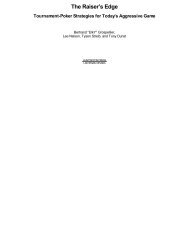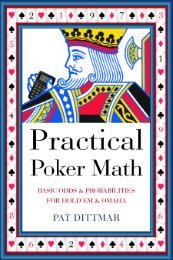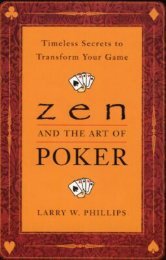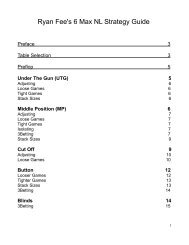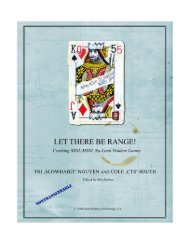Create successful ePaper yourself
Turn your PDF publications into a flip-book with our unique Google optimized e-Paper software.
Again, let’s look at the impact of removing a card. Let’s say the<br />
flop has come down KA3. How many combinations of AQ can<br />
our opponent have? One of the As is shown, so there are only<br />
three more possible for him to hold. There are three As and four<br />
Qs.<br />
3 x 4 = 12<br />
There are 12 different ways for him to hold AQ.<br />
Let’s look at a hand distribution for an assumed range. Let’s say<br />
someone raises, and we assume that they only have QQ+ and<br />
AQ+. So, for QQ, KK and AA there are six combinations for<br />
each of those pairs. <strong>That</strong>’s a total of 18 combinations of pairs.<br />
For AK and AQ there are 16 of each for a total of 32<br />
combinations. So, he can have a total of 50 combinations (18 +<br />
32). We’d like to know how often he has a big pair. We’ll<br />
divide the pair combinations by the total combinations.<br />
18 / 50 = 0.36<br />
We see he’ll have a big pair 36% of the time.<br />
Understanding the probability distribution of our opponent’s<br />
range has immense value. Let’s look at a simple illustration on a<br />
river decision.<br />
Hero: K♣Q♠<br />
Villain: AQ+, TT<br />
Board: Q♦T♥2♠6♣2♦<br />
Our opponent bets the pot. Which is better, calling or folding?<br />
In order to decide, we begin with our pot odds. He bet pot, so in<br />
order to call we know we need to be good at least 33% of the<br />
time. We beat AK, but we lose to AQ and TT. We can look at<br />
75





